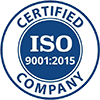What Are Custom CNC Parts?
Created at : May 8, 2025
In today’s world of precision manufacturing, custom CNC parts are the unsung heroes behind everything from rocket ships and racecars to surgical instruments and smartphones. Whether you're building a prototype or scaling a complex industrial product, understanding what these parts are — and how to get them — is key to bringing your ideas to life.
What Exactly Are Custom CNC Parts?
Custom CNC (Computer Numerical Control) parts are precisely manufactured components that are tailored to meet specific requirements. Unlike mass-produced parts, these are made-to-order using CNC machines — sophisticated equipment that follows coded instructions to cut, drill, turn, or mill materials into exact shapes.
These machines don't guess; they execute. Every move is based on a digital design, ensuring a level of precision and repeatability that's essential in industries like aerospace, automotive, medical devices, and electronics.
Common Applications Include:
- Aerospace: Flight-critical components and structural parts
- Medical: Implants, surgical instruments, and diagnostic devices
- Industrial Equipment: High-tolerance gears, brackets, and enclosures
- Consumer Products: Custom electronics housings and mechanical parts
Materials Used:
From lightweight aluminum and robust stainless steel to specialized plastics like PEEK and ABS, custom CNC parts can be machined from a wide range of materials depending on the application's needs.
How to Get Custom CNC Parts Made
Creating custom CNC parts may sound intimidating, but the process is surprisingly approachable. Here’s a breakdown of how to turn your vision into a physical, functional reality.
Step 1: Design Your Part
Everything begins with a CAD (Computer-Aided Design) file. This digital blueprint outlines every detail of your part — dimensions, tolerances, surface finishes, and the materials involved. Common file types include .STEP, .IGES, or .STL.
No CAD file? No problem. Many CNC service providers can help with design and modeling.
Step 2: Choose a Machining Partner
Look for shops that are certified (e.g., ISO 9001 or AS9100), offer prototyping, and have the right machinery for your job.
Step 3: Get a Quote
Submit your design for a quote. The shop will evaluate the feasibility, material costs, production time, and any setup or tooling expenses. Factors like part complexity, quantity, and finish requirements will affect the final price.
Step 4: Approve the Prototype
For critical applications, it’s wise to request a prototype or sample run. This step allows you to verify the part before committing to full-scale production — saving time, money, and frustration.
Step 5: Start Production
Once approved, the manufacturer will move forward with the production run. Depending on complexity and volume, delivery can range from a few days to several weeks.
Final Tips for a Successful Project
- Be precise with tolerances: Vague specs can lead to ill-fitting parts.
- Over-communicate your needs: If you need a mirror-polished finish or corrosion-resistant coating, say so upfront.
- Plan for lead times: Rush jobs are possible, but planning ahead saves costs and ensures quality.
From Design to Delivery: CNC Makes Custom Possible
Custom CNC parts are the bridge between innovation and execution. Whether you're a startup designing your first prototype or an engineer managing a complex build, understanding how to source and produce custom parts gives you a critical edge.
Ready to turn your concept into a CNC-crafted reality? Start with a design, find the right partner, and watch precision take shape — one cut at a time.
